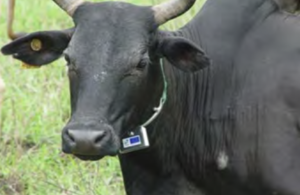DFID Research: Science-led innovation protects livestock from the Tsetse fly in Kenya
New collars developed to protect livestock from infection

Picture: ICIPE
The tsetse fly continues to have a devastating effect on communities managing livestock on the margins of wildlife reserves. As well as posing a distinct threat to humans, the flies transmit Nagana to livestock, a fatal disease which seriously depletes milk yields.
The Tsetse Repellant project has been working on a new technology designed to repel tsetse flies from livestock in Kenya. A collar worn by cattle works to drive the flies away reducing levels of Nagana infection in livestock and pointing to new potential in reducing human contact with the tsetse fly in the future.
The technology is a result of a partnership between the International Centre for Insect Physiology and Ecology (ICIPE) and the EU, and reports already suggest that it is proving over 90% effective in protecting cattle from infection.
This case study outlines the objectives and recorded impact of the technology so far, capturing feedback from farmers in the area.